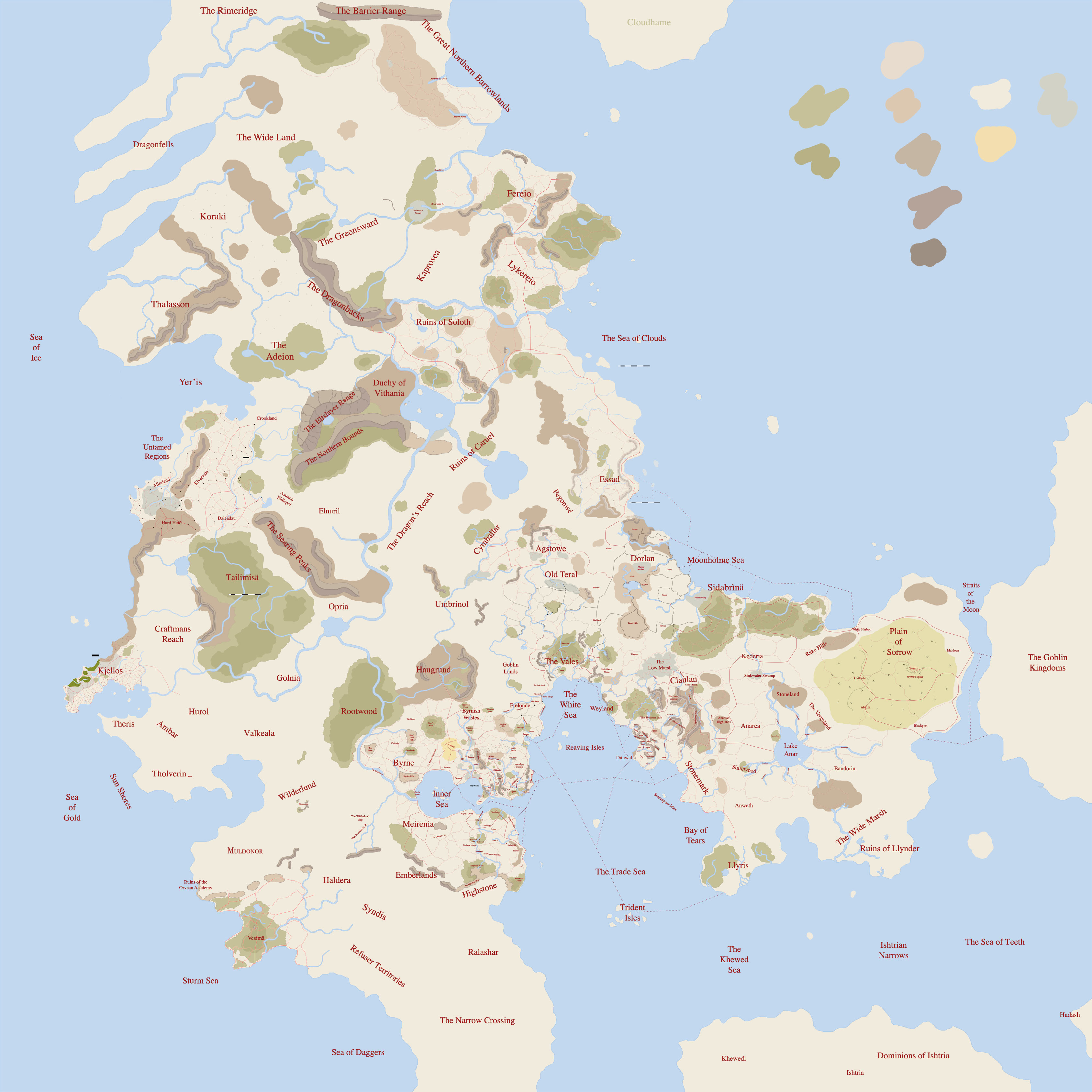This is a phenomenon I like to refer to as "generative play," and it seems to be something that a lot of GMs do. I've never seen anyone talk about it though, so this is your chance. When I talk about generative play, what I mean is that players playing in the setting come up with questions you would never think about. Something like writing a text adventure and then going to see what weird questions or commands people try to give your parser and then writing answers to them, generative play forms a list of questions simply by virtue of its occurance.
"My character comes from ;Dorlan. I want to know what it's like in this part."
"We're going to head to Silversong to try to find a way to journey all the way north to unexplored Cloudhame."
It's statements like these that suddenly kick me into a creative frenzy. I'll be honest: the success I've seen with the 10th Age these past three years lies squarely on the shoulders of players who always want to know more. Without an audience, my interest in a setting eventually slows to a steady trickle. With players to cater to, there are great surges and gushes of information released every few days just to satisfy their needy, hungry desires to learn new lores and conquer new lands.
 |
| This map is actually huge. |
When I'm bored and I'm done working for the day and I can't think of anything to do I generally ask my players "What would you like to know more about?" and whatever they answer, that's the place I design. I started the 10th Age three years ago with an almost completely blank map. Now, you can walk from sea to sea and know where you're going to the whole time. That is a feeling of supreme accomplishment.
So tell me, my friends... do you use generative play to spur on your own creations?

I should add that I feel a minimum amount of "setting competency" needs to be built before running anything.
ReplyDeleteJust because I didn't know a lot about some places doesn't mean my blank map wasn't populated with names of kingdoms and general notions about what went on there.
It's important to have a minimum amount of stuff designed to start: deep history, gods, regional politics. But you can apply a telescoping effect to this, too; the farther away a place is, the less detail it needs as the game starts. This can simulate the character's OWN ignorance about the wider world.
My formative example of 'setting competency' is the list of libations at the Inn of the Welcome Wench in Hommlet. There's Keoish brandy, and Velunan fireamber wine, and a liqueur called Ulek Elixir. The list speaks to a wider world beyond the bounds of the village, and wheter or not any of it gets developed extensively, its mere existence adds to the sense of place.
DeleteI find that small details like that do wonders to build a sense of where and when, to establish a definite semantic space. There's another whole article in that assumption that I hope to address soon.
ReplyDelete